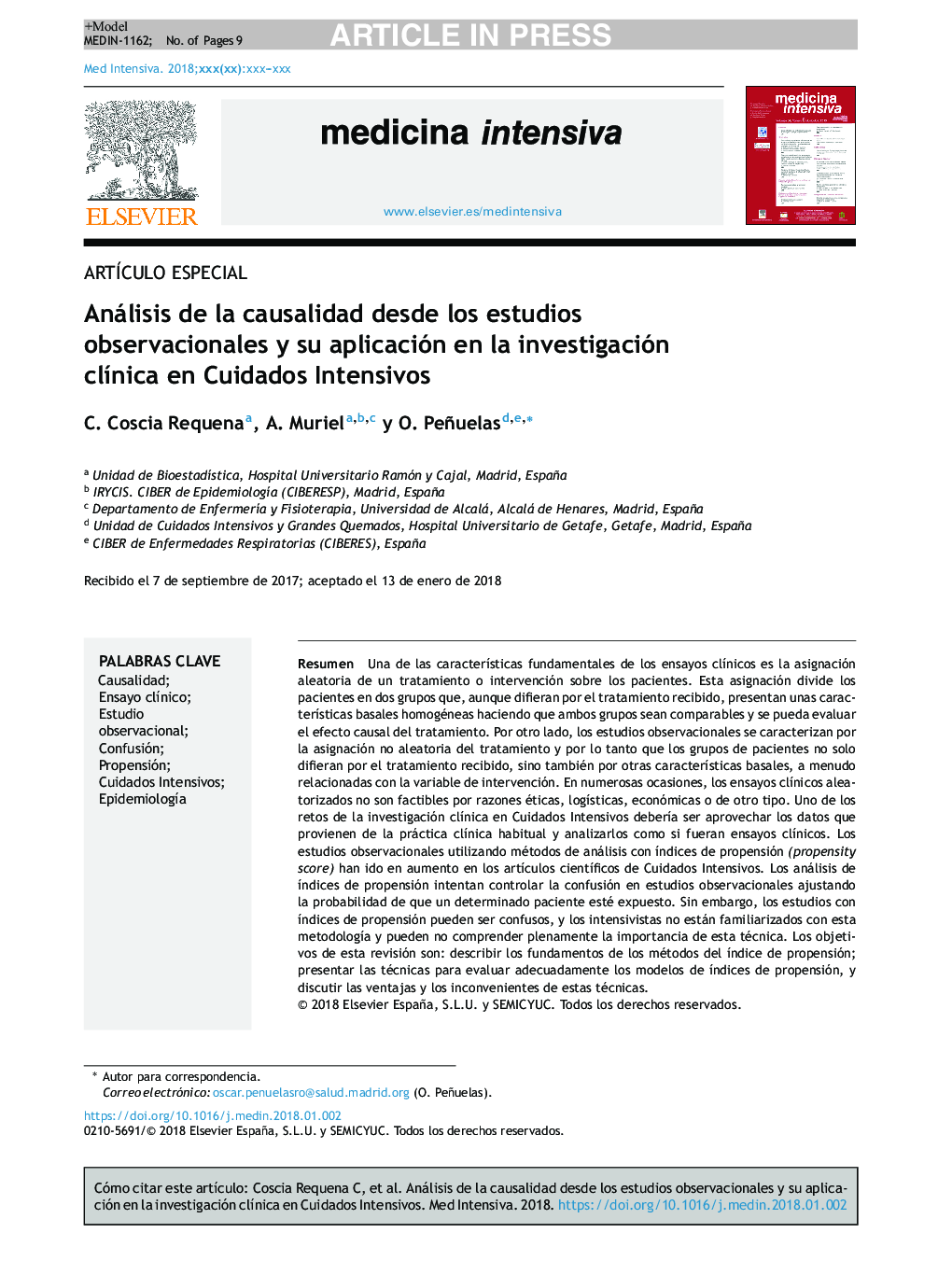| کد مقاله | کد نشریه | سال انتشار | مقاله انگلیسی | نسخه تمام متن |
|---|---|---|---|---|
| 8695707 | 1581999 | 2018 | 9 صفحه PDF | دانلود رایگان |
عنوان انگلیسی مقاله ISI
Análisis de la causalidad desde los estudios observacionales y su aplicación en la investigación clÃnica en Cuidados Intensivos
ترجمه فارسی عنوان
آنالیز علیت از مطالعات مشاهده شده و کاربرد آن در تحقیقات بالینی در بخش مراقبت های ویژه
دانلود مقاله + سفارش ترجمه
دانلود مقاله ISI انگلیسی
رایگان برای ایرانیان
کلمات کلیدی
علیت محاکمه بالینی مطالعه مشاهده شده، سردرگمی تساهل مراقبتهای ویژه، اپیدمیولوژی، علیت، محاکمه بالینی مطالعه مشاهده شده، مهاجمین نمره گرایش، مراقبتهای ویژه، اپیدمیولوژی،
Epidemiología - اپیدمیولوژیEpidemiology - اپیدمیولوژی(همهگیرشناسی)Causality - علیت Causalidad - علیتEnsayo clínico - محاکمه بالینیconfounders - مخالفانIntensive care - مراقبت شدیدCuidados intensivos - مراقبت شدیدObservational study - مطالعات مشاهده ایEstudio observacional - مطالعه مشاهده ایPropensity score - نمره تساویClinical trial - کارآزمایی بالینیconfusion - گیجی
ترجمه چکیده
تخصیص تصادفی درمان یا مداخله، یکی از ویژگی های کلیدی آزمایشات بالینی است و بیماران را به گروه های درمان تقسیم می کند که تقریبا برای ابتلا به حالت پایه و به همین ترتیب قابل مقایسه با سایر متغیرها است. با این حال، در مطالعات مشاهده ای که تخصیص درمان به صورت تصادفی نیست، بیماران در گروه درمان و کنترل اغلب در متغیرهایی که به متغیرهای مداخله وابسته هستند متفاوت هستند. این عدم تعادل در متغیرها می تواند منجر به برآورد های منفی از تاثیر درمان شود. با این حال، کارآزمایی بالینی تصادفی گاهی اوقات برای اهداف اخلاقی، لجستیکی، اقتصادی یا دلایل دیگر امکان پذیر نیست. برای حل این شرایط، علاقه به زمینه تحقیقات بالینی در طراحی مطالعات بیشتر شبیه به آزمایش های تصادفی با استفاده از داده های مشاهداتی (یعنی غیر تصادفی) شده است. مطالعات مشاهده شده با استفاده از روش های تحلیل نمره گرایش در مقالات علمی مراقبت های ویژه افزایش یافته است. تجزیه و تحلیل امتیازات تلاش برای کنترل مخلوط در مطالعات غیر تجربی با تنظیم برای احتمال وجود دارد که یک بیمار داده شده است. با این حال، مطالعاتی با شاخص های گرایش ممکن است گیج کننده باشد و افراد فشرده با این روش آشنا نیستند و ممکن است اهمیت این روش را کاملا درک نکنند. اهداف این بررسی عبارتند از: برای توصیف اصول روش شاخص شاخص گرایش؛ ارائه تکنیک های مناسب برای مدل سازی شاخص های گرایش برای بحث در مورد مزایا و معایب این تکنیک ها.
موضوعات مرتبط
علوم پزشکی و سلامت
پزشکی و دندانپزشکی
مراقبت های ویژه و مراقبتهای ویژه پزشکی
چکیده انگلیسی
Random allocation of treatment or intervention is the key feature of clinical trials and divides patients into treatment groups that are approximately balanced for baseline, and therefore comparable covariates except for the variable treatment of the study. However, in observational studies, where treatment allocation is not random, patients in the treatment and control groups often differ in covariates that are related to intervention variables. These imbalances in covariates can lead to biased estimates of the treatment effect. However, randomized clinical trials are sometimes not feasible for ethical, logistical, economic or other reasons. To resolve these situations, interest in the field of clinical research has grown in designing studies that are most similar to randomized experiments using observational (i.e. non-random) data. Observational studies using propensity score analysis methods have been increasing in the scientific papers of Intensive Care. Propensity score analyses attempt to control for confounding in non-experimental studies by adjusting for the likelihood that a given patient is exposed. However, studies with propensity indexes may be confusing, and intensivists are not familiar with this methodology and may not fully understand the importance of this technique. The objectives of this review are: to describe the fundamentals of propensity index methods; to present the techniques to adequately evaluate propensity index models; to discuss the advantages and disadvantages of these techniques.
ناشر
Database: Elsevier - ScienceDirect (ساینس دایرکت)
Journal: Medicina Intensiva - Volume 42, Issue 5, JuneâJuly 2018, Pages 292-300
Journal: Medicina Intensiva - Volume 42, Issue 5, JuneâJuly 2018, Pages 292-300
نویسندگان
C. Coscia Requena, A. Muriel, O. Peñuelas,
